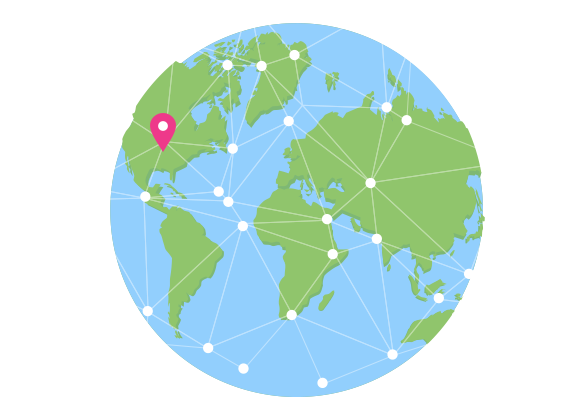Dams provide vital service and protection to our communities and economy. The average age of the 90,580 dams in the country is 56 years. As our population grows and development continues, the overall number of high-hazard potential dams is increasing, with the number climbing to nearly 15,500 in 2016. Due to the lack of investment, the number of deficient high-hazard potential dams has also climbed to an estimated 2,170 or more. It is estimated that it will require an investment of nearly $45 billion to repair aging, yet critical, high-hazard potential dams.
Learn More
America’s roads are often crowded, frequently in poor condition, chronically underfunded, and are becoming more dangerous. More than two out of every five miles of America’s urban interstates are congested and traffic delays cost the country $160 billion in wasted time and fuel in 2014. One out of every five miles of highway pavement is in poor condition and our roads have a significant and increasing backlog of rehabilitation needs. After years of decline, traffic fatalities increased by 7% from 2014 to 2015, with 35,092 people dying on America’s roads.
Learn More
Much of the U.S. energy system predates the turn of the 21st century. Most electric transmission and distribution lines were constructed in the 1950s and 1960s with a 50-year life expectancy, and the more than 640,000 miles of high-voltage transmission lines in the lower 48 states’ power grids are at full capacity. Energy infrastructure is undergoing increased investment to ensure long-term capacity and sustainability; in 2015, 40% of additional power generation came from natural gas and renewable systems. Without greater attention to aging equipment, capacity bottlenecks, and increased demand, as well as increasing storm and climate impacts, Americans will likely experience longer and more frequent power interruptions.
Learn More
For more than 150 years the rail network has been a critical component of the U.S. transportation system and economy. Today it carries approximately one-third of U.S. exports and delivers five million tons of freight and approximately 85,000 passengers each day. The private freight rail industry owns the vast majority of the nation’s rail infrastructure, and continues to make significant capital investment — $27.1 billion in 2015 — to ensure the network’s good condition. U.S. rail still faces clear challenges, most notably in passenger rail, which faces the dual problems of aging infrastructure and insufficient funding.
Learn More
The United States’ 926 ports are essential to the nation’s competitiveness, serving as the gateway through which 99% of overseas trade passes. Ports are responsible for $4.6 trillion in economic activity — roughly 26% of the U.S. economy. As ships get bigger, congestion at landside connections to other components of the freight network increasingly hinders ports’ productivity. Similarly, on the waterside, larger ships require deeper navigation channels, which only a few U.S. ports currently have. To remain competitive globally and with one another, ports have been investing in expansion, modernization, and repair.
Learn More
The United States’ 25,000 miles of inland waterways and 239 locks form the freight network’s “water highway.” This intricate system, operated and maintained by the U.S. Army Corps of Engineers, supports more than half a million jobs and delivers more than 600 million tons of cargo each year, about 14% of all domestic freight. Most locks and dams on the system are well beyond their 50-year design life, and nearly half of vessels experience delays. Investment in the waterways system has increased in recent years, but upgrades on the system still take decades to complete.Learn More
Drinking water is delivered via one million miles of pipes across the country. Many of those pipes were laid in the early to mid-20th century with a lifespan of 75 to 100 years. The quality of drinking water in the United States remains high, but legacy and emerging contaminants continue to require close attention. While water consumption is down, there are still an estimated 240,000 water main breaks per year in the United States, wasting over two trillion gallons of treated drinking water. According to the American Water Works Association, an estimated $1 trillion is necessary to maintain and expand service to meet demands over the next 25 years.
Learn More
The U.S. must continue to invest in our infrastructure to ensure our quality of life and economic competitiveness.
Take Action








